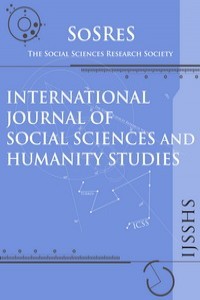MODEL OF HYPOTHECATED TAX ON INFORMATION GOODS
MODEL OF HYPOTHECATED TAX ON INFORMATION GOODS
Information or knowledge, which can be incorporated in tangible objects at the same time in an unlimited number of copies at different locations anywhere in the world, constitutes intellectual property of an information producer. Intellectual property rights (IPR) legislation was created to optimize social welfare and to promote production of information by granting producers a temporary monopoly in return for a disclosure of their works. However, current IPR regimes are over- protective in terms of monopoly that is granted to a producer but they are under- protective against piracy and unauthorized use. Nowadays, the main effort is made to secure information in order to forbid unauthorized use, and thus this approach creates high barriers for information diffusion. The aim of the current work is to look for alternative solution of the IPR problem which can be defined as: how to profit from production of information without reduction its natural non- excludability and transferability. One of the possible solutions of IPR problem could be introduction of hypothecated tax on information goods. A theoretical model which describes exchange and production of the information goods was developed in support of the suggested solution. The case when production of the information goods is subsidized from the tax proceeds is also compared with the case when the information goods are sold on the market for unlimited flat rate. It was found that under assumption of homogeneous wealth and cost distributions the both cases result in the same consumption levels and the same condition on production costs
___
- Arora, Ashish, Marco Ceccagnoli and Wesley Cohen (2008), “R&D and the Patent Premium”, International Journal of Industrial Organization, Vol. 26, No. , pp. 1153-1179.
- Arundel, Anthony (2000), “Patent – the Viagra of Innovation Policy?”, Internal
- Report to the Expert Group in the Project “Innovation Policy in a Knowledge- Based Economy”, Maastricht, MERIT. Cohen, Wesley M., Akira Goto, Akiya Nagata, Richard R. Nelson and John P. Walsh, (2002) “R&D Spillovers, Patents and the Incentives to Innovate in Japan and the United States”, Research Policy, Vol. 31, pp.1349–1367.
- Cotropia, Christopher A. and Mark A. Lemley (2009), “Copying in Patent Law”,
- North Carolina Law Review, Vol. 87, p 1421.
- Lemley, Mark A. (2011), “The Myth of the Sole Inventor”, Stanford Public Law
- Working Paper. Available at SSRN: http://ssrn.com/abstract=1856610.
- Varian, Hal. R. (1996), “Differential Pricing and Efficiency”, First Monday, Vol. , No. 2 http://firstmonday.org/htbin/cgiwrap/bin/ojs/index.php/fm/article/view/473/394
- Varian, Hal R. (2001), “Economics of Information Technology”, a revised version of the Raffaele Mattioli Lecture, delivered at Bocconi University,
- Milano, Italy, on November 15-16, 2001 and the Sorbonne on March 6, 2003. http://people.ischool.berkeley.edu/~hal/people/hal/papers.html
- Varian, Hal R. (2005), “Universal Access to Information”, Communications of the ACM, Vol. 48, No. 10 http://people.ischool.berkeley.edu/~hal/Papers/2006/univ-access-info.pdf
- World Intellectual Property Organization (WIPO) http://www.wipo.int/ipstats/en/
- Başlangıç: 2009
- Yayıncı: Sosyal Bilimler Araştırmaları Derneği
Sayıdaki Diğer Makaleler
CONSUMER CHARACTERISTICS IN THE INSTITUTIONAL CATERING ACCORDING TO PRIMARY RESEARCH
Mónika FODOR, ágnes CSİSZÁRİK-KOCSİR, András MEDVE
CLIMATE CHANGE AND SOUTH ASIAN ASSOCIATION FOR REGIONAL COOPERATION: A REGIONAL RESPONSE
A COSMOPOLITAN APPROACH TO THE EUROPEAN CRISIS
Cem Güçel, İsmail Tokmak, Hakan Turgut
THE LEGAL CHARACTERS OF THE SALES CONTRACT
Sorin FİLDAN, Narcisa Mihaela STOİCU
DOES OIL INCOME IMPEDE DEMOCRATIZATION IN MUSLIM-MAJORITY COUNTRIES?
Osman Nuri ARAS, Elçin SÜLEYMANOV, Ayaz ZEYNALOV
THE RELATIONSHIP BETWEEN ACCOUNTING BETA AND CAPM: EVIDENCE FROM TURKEY
